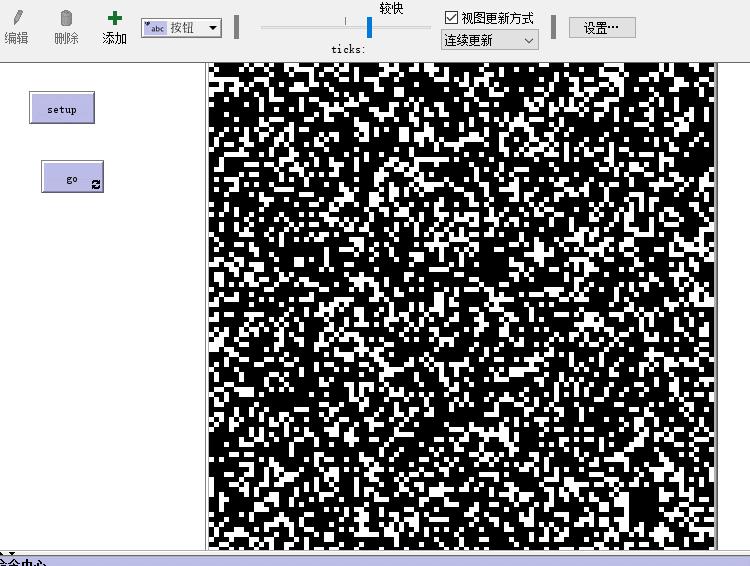


#NETLOGO RANDOM FLOAT SOFTWARE#
The framework used for this package is similar to NetLogo, but the implementation of SE-ABMs do not call or interact with the NetLogo software or any NetLogo code. This package provides new R classes, which are extensions of core R classes, and functions to build and run SE-ABMs in R using only the R language.
#NETLOGO RANDOM FLOAT CODE#
Both the R extension of the NetLogo software and the RNetLogo and nlrx R packages require the user to code his/her model in the NetLogo software using the NetLogo language and the model always runs inside NetLogo. Then, the model is launched and controlled by an R script but it still runs in NetLogo. Using these packages, the agent-based model needs to be previously coded in the NetLogo software using the NetLogo language. 2012, Thiele 2014) or nlrx (Salecker and Sciaini 2019) that act as an interface to run NetLogo. The second way is with the R packages RNetLogo (Thiele et al. The model is coded in the NetLogo software using the NetLogo language and a few R functions. This extension is used inside a NetLogo model and allows calling and using R functions inside the NetLogo code. The first one is an R extension for the NetLogo software (Thiele and Grimm 2010). There are already two ways to couple NetLogo and R to benefit from both software assets for agent-based modeling. Users can benefit from the power and versatility of this medium level language which includes many powerful, user-generated packages to build their SE-ABMs. Using the R language, already familiar to many ecologists, to implement SE-ABMs instead of using another software has advantages. R has a huge open-source user and developer community that continuously builds on and improves the software with core enhancements and new extension packages, therefore increasing the software's potential and facilitating its use.

R (R Core Team) is one of the globally leading open source data and statistical languages (SQL and Python being the other two) and it is widely used in many disciplines, including ecology, to explore and analyze data. NetLogo has many other advantages such as a built-in visual interface, several extensions to broaden the language, and it executes quickly.

This makes the software relatively easy to learn and use, as many actions are already pre-coded into these primitives. NetLogo has a well-defined structure to represent model agents and a high-level language composed of less than 500 words (called ‘primitives’) to be used to code a model. NetLogo (Wilensky 1999), in particular, offers great potential in SE-ABMs implementation, both for research and as a teaching tool (Tisue and Wilensky 2004). Several modeling environments already exist to build agent-based models such as NetLogo (Wilensky 1999), SELES (Fall and Fall 2001), NOVA (), GAMA (), Capsis (), Repast (Collier and North 2013, North et al. 2012), and models of vegetation dynamics (Wallentin et al. 2012), analyses of movement and habitat selection patterns for animals (McIntire et al. SE-ABMs have been widely used by ecologists to study populations and communities with, for example, research on human–wildlife interactions (Chion et al. These models can include as many agent-level mechanisms as wanted and they are especially useful when population-level patterns are difficult to understand (DeAngelis and Grimm 2014). When they are ‘spatially-explicit’, there is an effect of the landscape and the fate of the entities is therefore constrained by their environment (McIntire et al. Population-level patterns emerge from the agent-level mechanism simulations (Railsback and Grimm 2012). These entities have state-dependent behaviors and they can interact with each other and/or their environment. Agent-based models are bottom–up models that simulate the fate of unique, autonomous entities. Many scientific disciplines have shown great interests in spatially explicit agent-based models (SE-ABMs) (DeAngelis and Grimm 2014).


 0 kommentar(er)
0 kommentar(er)
